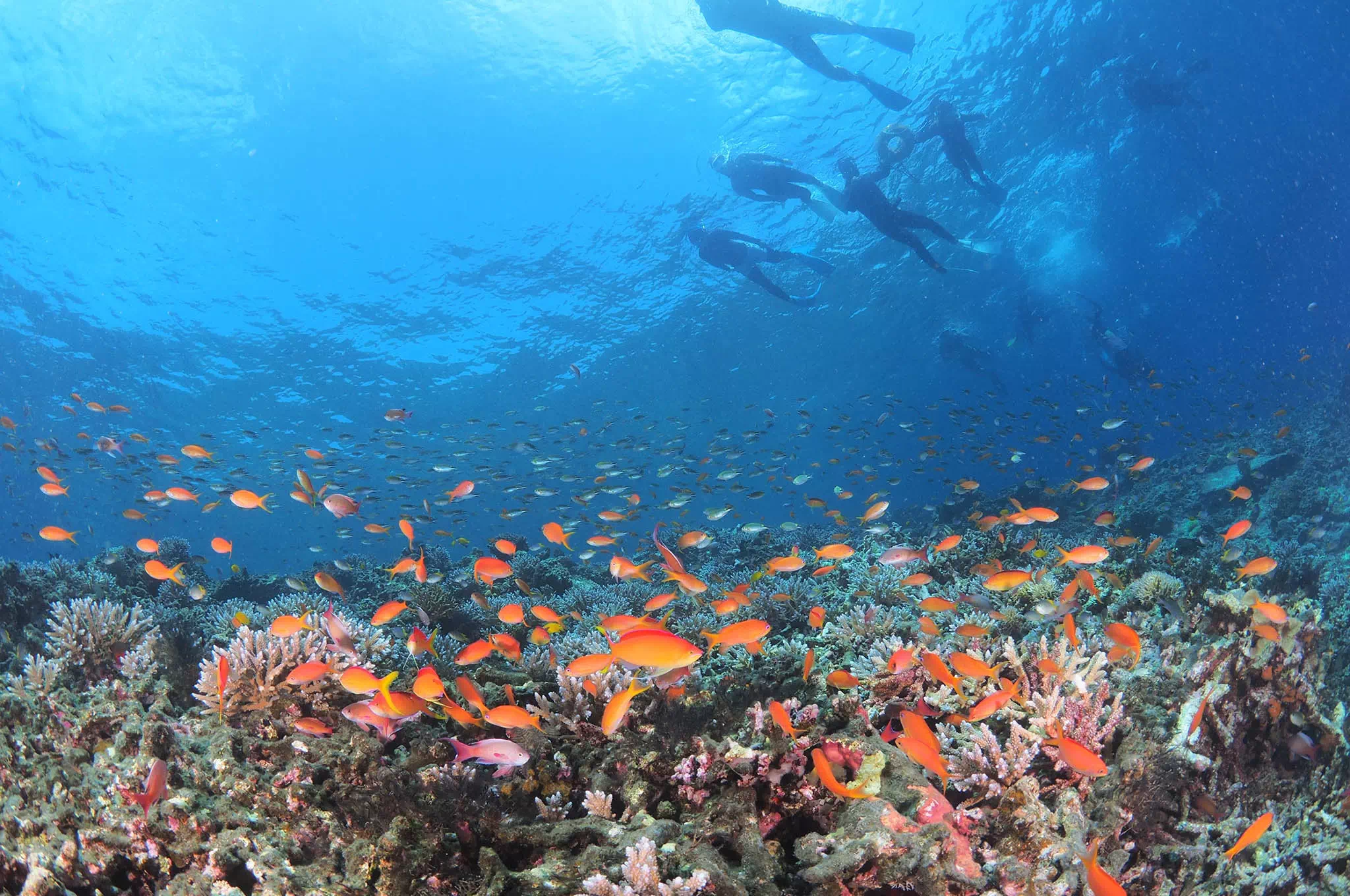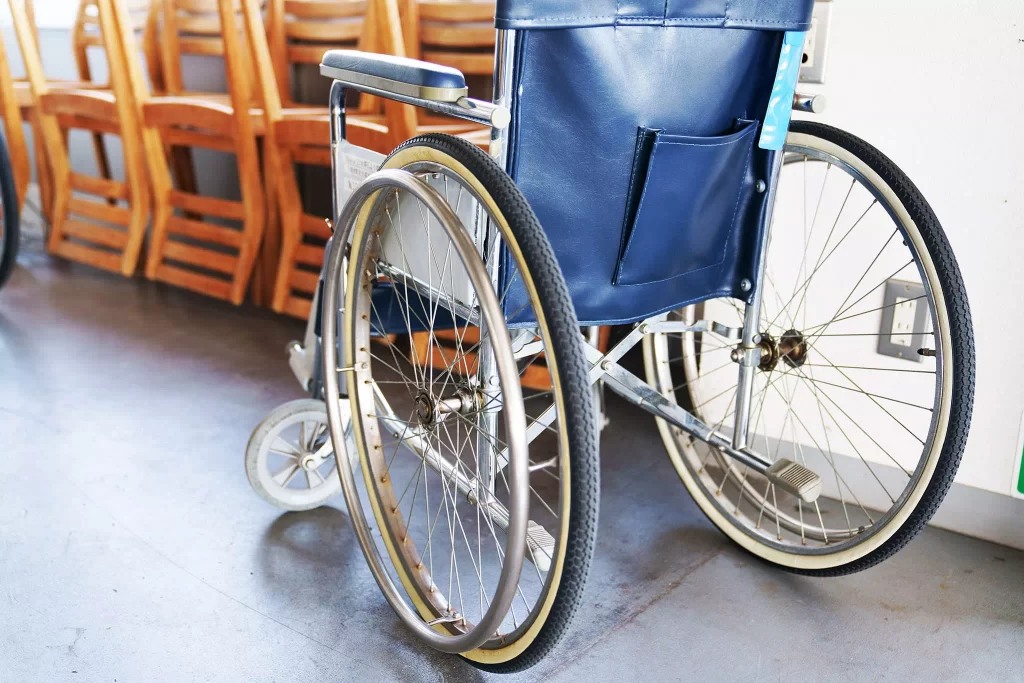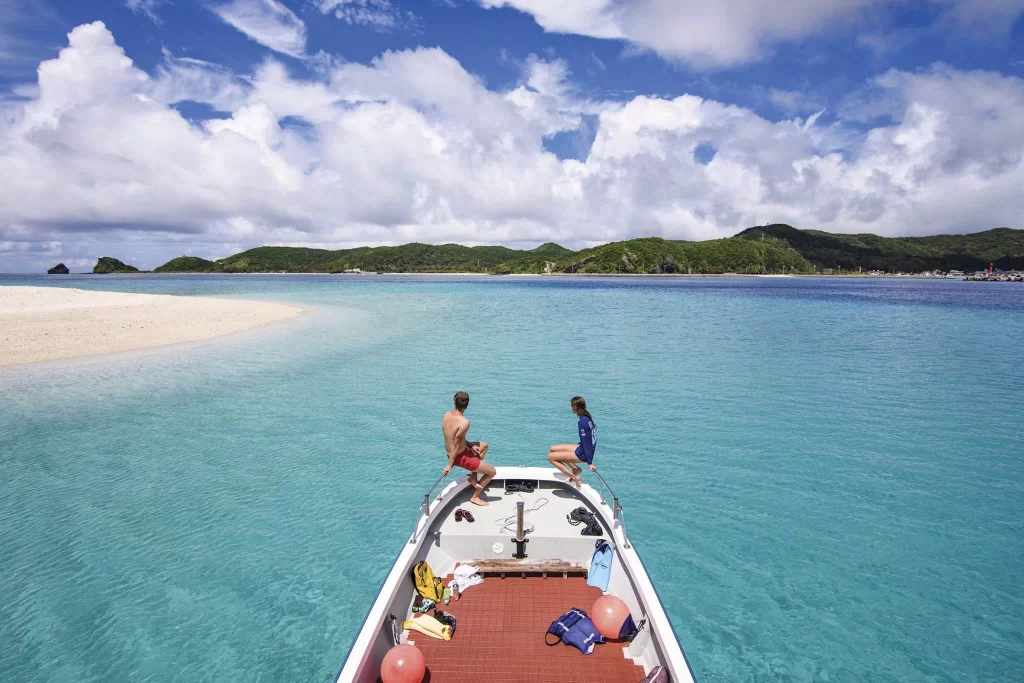Enjoying Okinawa Safely
Tips and advice for enjoying Okinawa and the ocean comfortably and safely
Okinawa has a subtropical climate and gloriously long summers. Its beaches, forests, and coral reefs are major draws and fun to explore, but they also support diverse ecosystems. Whether sunbathing on the beach, exploring forest trails, or swimming, snorkeling, or diving, there are dangers and risks.
Browse the information below for tips and advice on enjoying Okinawa safely, from when and where to swim to poisonous snakes and what to watch out for in the water. If you find yourself in an emergency situation, contact the emergency services on the numbers below.
- Ambulance: 119
- Coast guard: 118
- Police: 110
- Fire: 119
Heat stroke and Sunburn
The sun’s rays are very strong in Okinawa and it is very easy to burn. Make sure to apply sunscreen regularly, avoid the midday sun, wear a hat and sunglasses, and cover up with something light to guard against UV rays. When swimming, use a rash guard. Sunburn can cause a high temperature, be painful, and can even cause the skin to blister. In extreme cases you may need medical attention.
It is important to take similar precautions to avoid heatstroke, which can be caused by being in the sun for a long time. Limit your time in the sun, use a parasol at the beach, stay hydrated, and make sure your body gets enough sodium. Seek medical attention if you feel unwell during your trip, and in the case of a medical emergency call 119 for an ambulance.
Snakes
There are several types of snake in Okinawa. Most are not venomous, or have a bite that poses little threat to people. Habu, or pit vipers, however, are extremely venomous and a bite can be life-threatening. There are three types to watch out for, namely, habu, hime habu, and sakishima habu. They inhabit grasslands and forested areas, and are occasionally spotted in parks in less populated areas. They are at their most active during warmer months, between March and October. It is generally uncommon to come across one, but it is important to be able to recognize one.
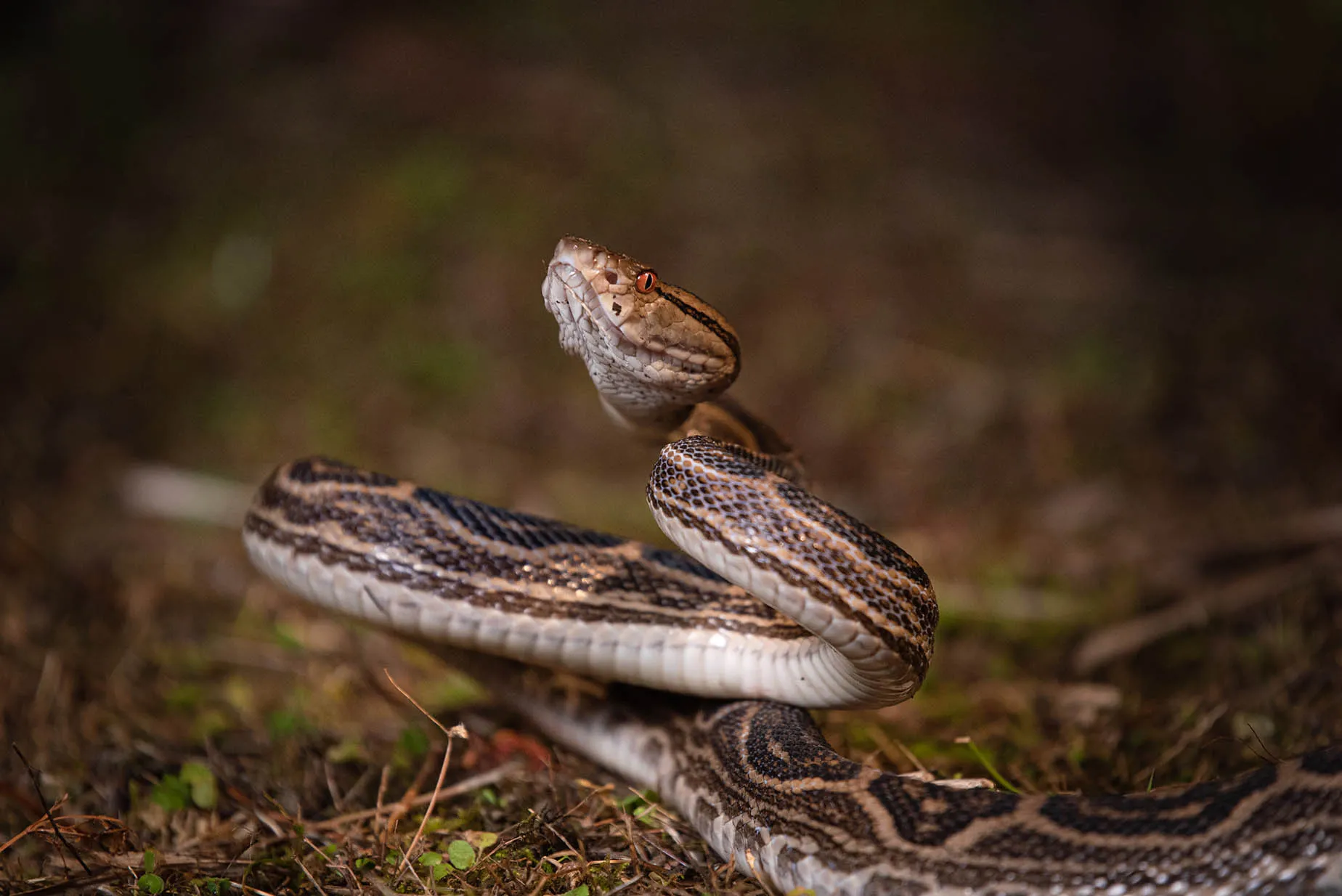
- Habu (Okinawan habu ; Protobothrops flavoviridis)
- Habu have complicated black patterning on a yellow or white body.
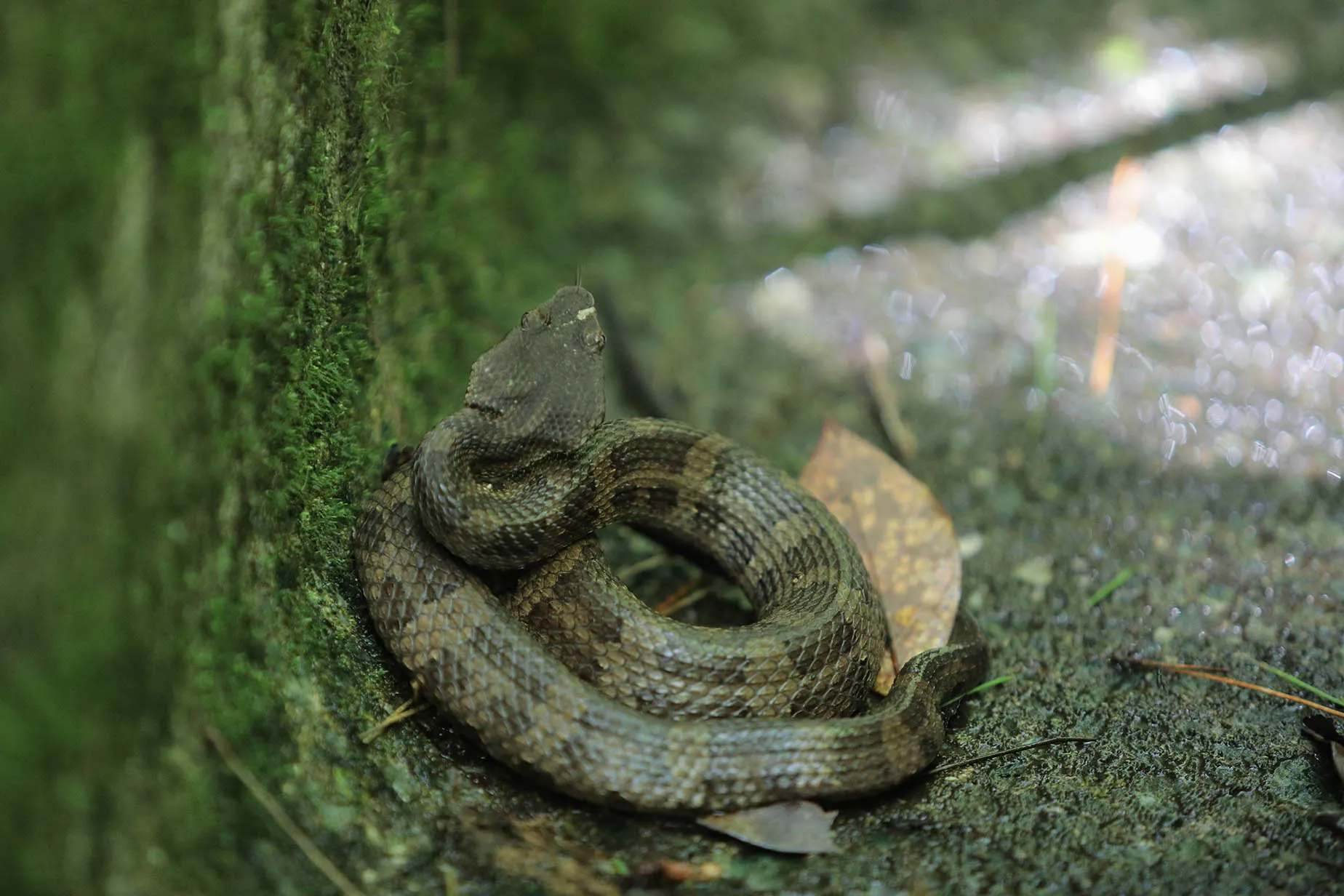
- Hime habu (Okinawa pitviper; Ovophis okinavensis)
- Hime habu have black spots on a grey or brown body.
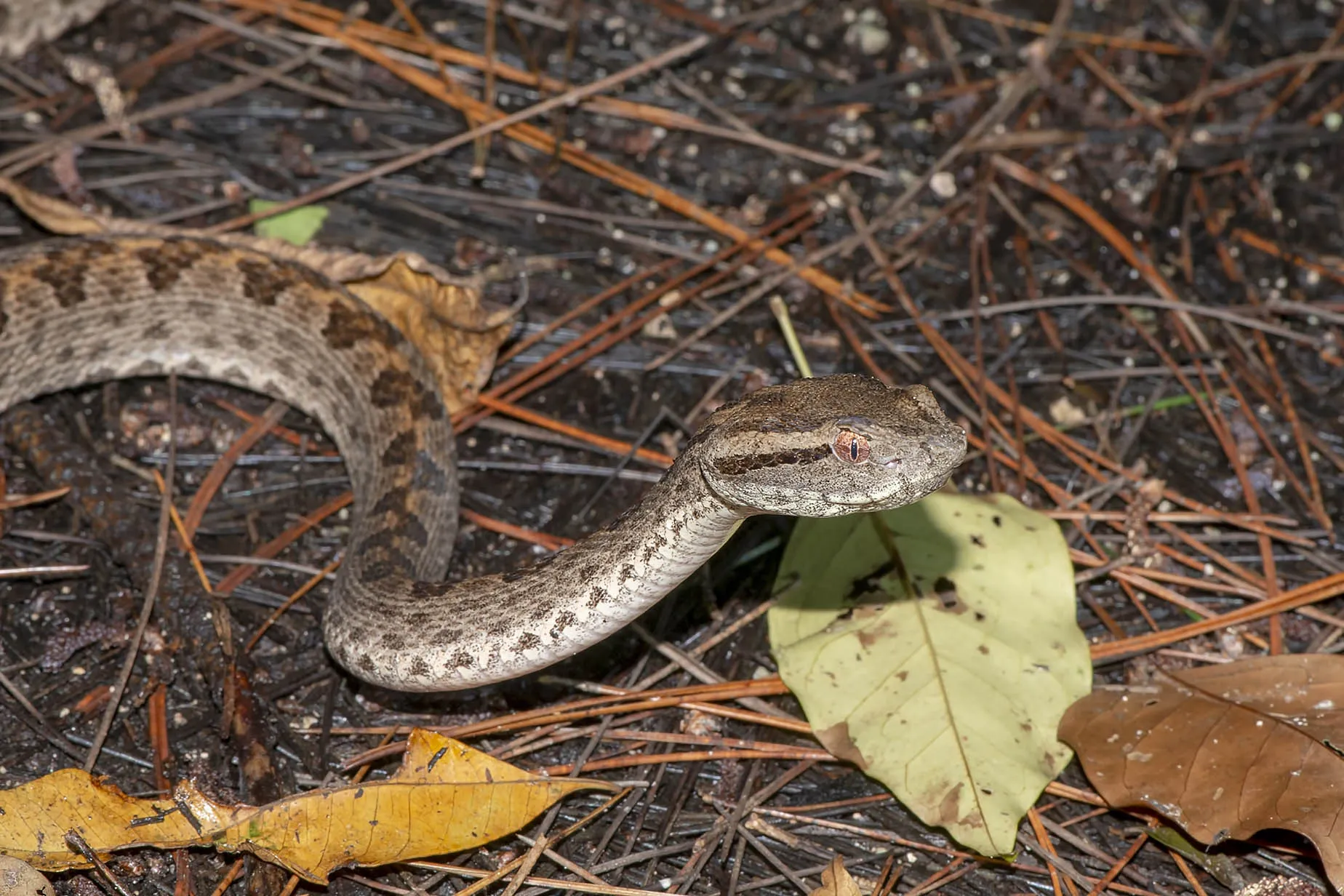
- Sakishima habu (elegant pitviper; Protobothrops elegans)
- Sakishima habu have a jagged black pattern on a brown body.
- What to do if you see a habu?
- Move away keeping a distance of at least 1.5 meters. Habu snakes cannot jump and have a strike zone of less than 1.5 meters. If you think your life is in danger, call the police on 110.
- What to do if you are bitten by a habu?
- Do not panic or overexert yourself. Stay calm, check the bite, and get help immediately. Habu bites swell within a few minutes and are very painful. Shout out for help, but do not run, as this will make the venom spread faster. Have someone take you to hospital by car, call 119 for an ambulance, or walk slowly to the nearest medical center.
If you are unable to get to a hospital quickly, cover the area with a towel, cloth, or bandage, and lightly secure it in place. The covering should be tied loose enough so you can fit one finger inside, and untied and re-tied once every 15 minutes. It will help slow the flow of blood. Never use a tourniquet or tie the area too tightly.
Swimming
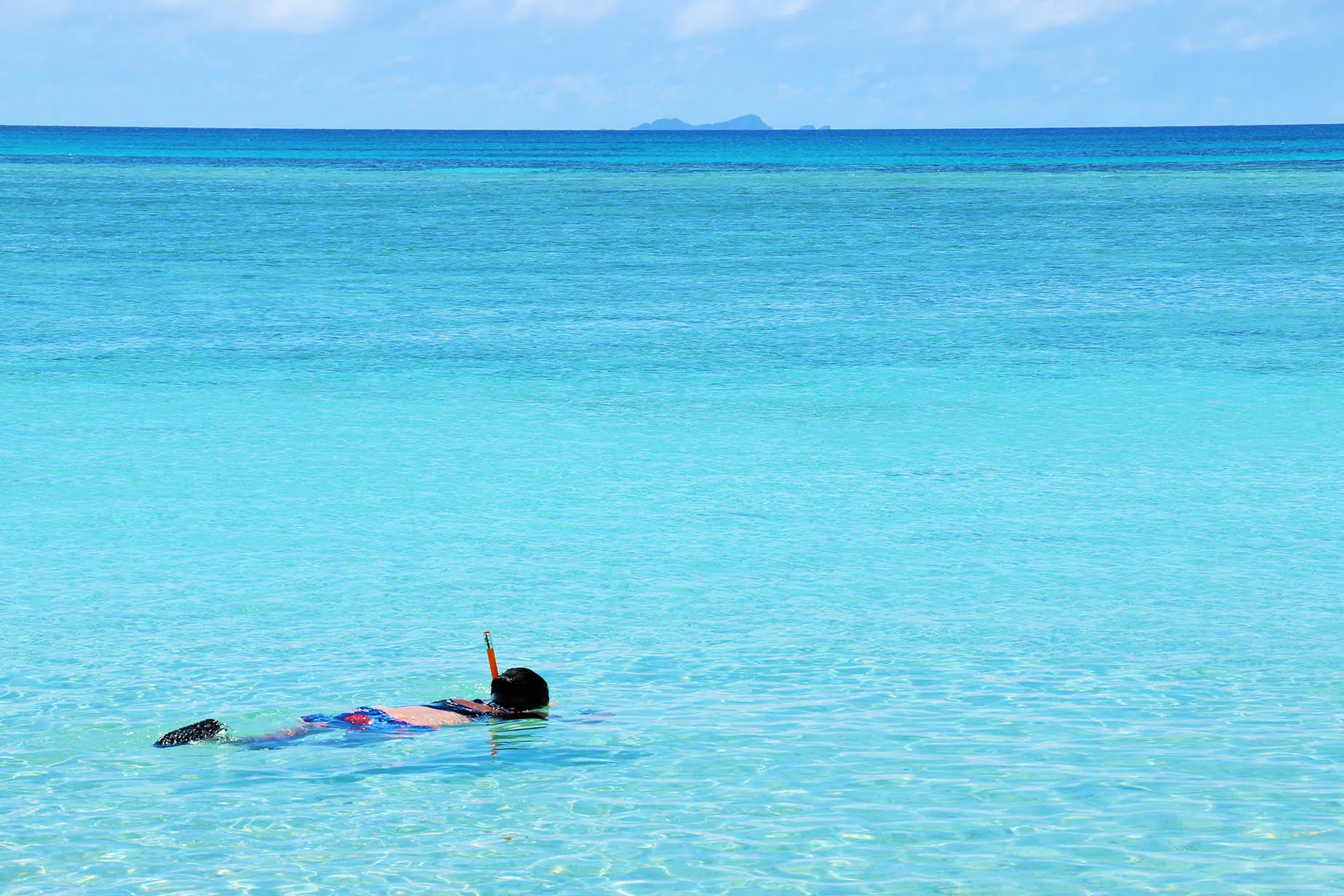
Only swim in designated swimming areas and always follow the instructions of lifeguards. Swimming outside of designated areas or in prohibited areas is dangerous: Tide changes can be significant; currents can be strong; there may be undercurrents; and there is an increased chance of encountering venomous marine life. Accidents at sea are not uncommon, so please swim responsibly, and be aware that swimming outside of designated areas is at your own risk. Adhere to the guidelines below to enjoy the waters around Okinawa safely and to protect the reefs and their unique underwater ecosystems. If you witness or are involved in a maritime accident or injury, call 118 for the coast guard.
- Avoid swimming during low tide to minimize the risk of damaging the coral and injuring yourself.
- Refrain from feeding the fish, as this can have a damaging effect on the ecosystem.
- Do not go out into the open sea. In Okinawa the reefs are shallow, but the areas beyond the reef edge are deep and the tide conditions and currents can change rapidly and be hazardous here.
Undercurrents
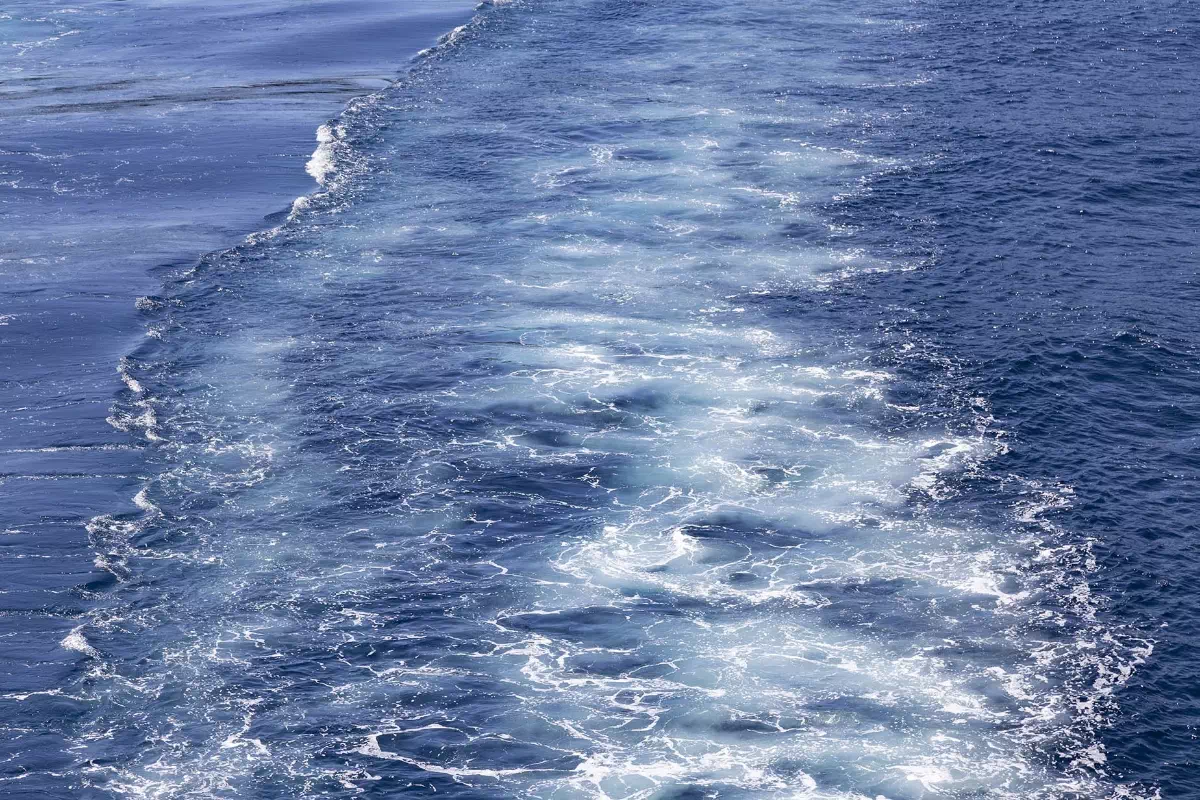
There may be dangerous undercurrents outside of designated swimming areas. It is important to know where they occur, how to avoid them, and what to do if you get caught in one.
- Rip currents
These flow from the shore out into the open sea. They can be anywhere between 10 to 30 meters wide, and have speeds of up to 2 meters per second. If you get caught in one, swim parallel to the shore to escape it or wait without panicking for someone to rescue you. - Reef rip currents
Very rapid rip currents can form around the edges of reefs. Getting caught in one can carry you into the open sea very quickly. Swimming parallel to the shore is the best way to escape one. - Down currents
Down currents can occur when two opposing currents meet or at the ends of reefs with steep drop-offs. They flow downwards towards the ocean floor and can drag you downwards very quickly. Divers and snorkelers should be especially careful of down currents and should check safety procedures with accompanying dive staff.
Snorkeling
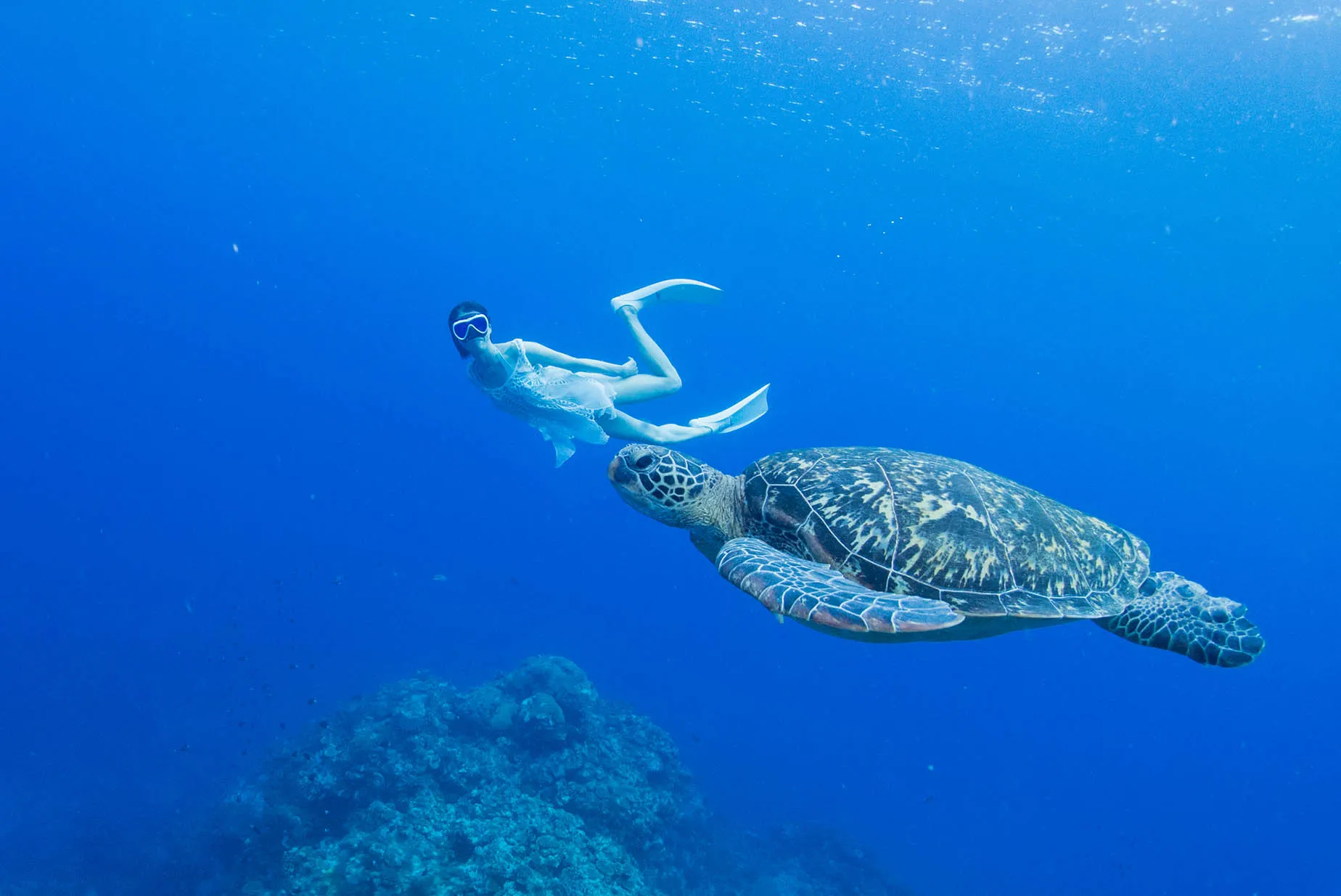
Snorkeling is a great way to explore Okinawa’s beautiful reefs, but it can be dangerous. Stay safe by following the advice below and by only snorkeling in designated swimming areas or on organized tours,
- Wear a life jacket.
- Snorkel in pairs.
- Make sure you know how to use your snorkeling equipment properly.
- Stay informed about the weather and sea conditions.
- Limit your snorkeling to short sessions to avoid becoming overly tired in the water.
- Do not snorkel when unwell or under the influence of alcohol.
Diving
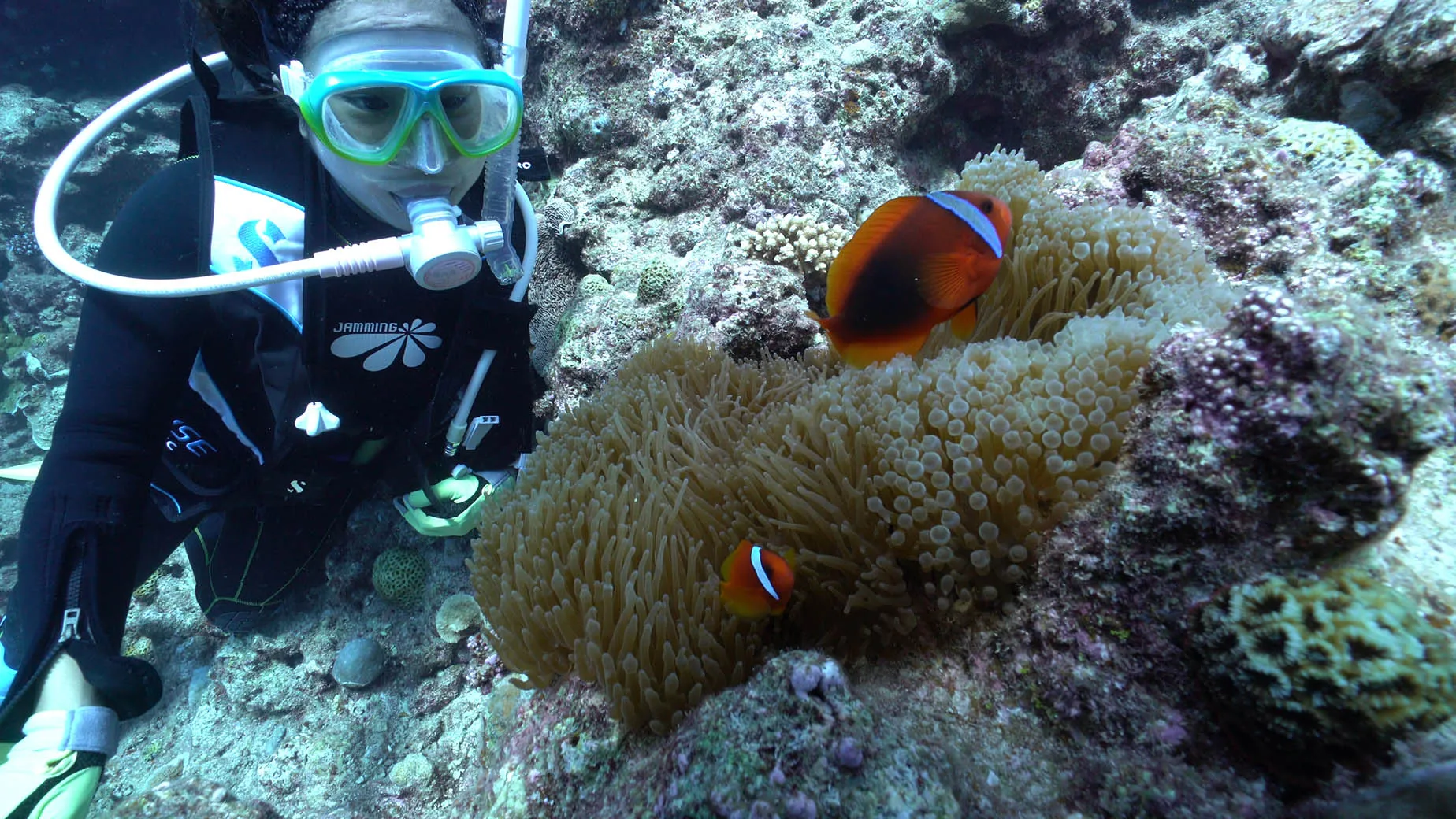
Okinawa has many wonderful dive sites and there are dive shops across the islands. Diving is a popular leisure activity in Okinawa but it can be dangerous. Always dive responsibly, follow the instructions of an experienced dive instructor, and note the advice below.
- Know your level and only dive within your limits.
- Make sure you are in good health. If you have medical issues, get a letter of consent from your doctor.
- Do not fly the same day you have been diving.
- Do not dive under the influence of alcohol or after drinking too much the night before.
- Do not dive if you feel unwell or overly tired on the day.
- Make sure your equipment is in good condition and full working order.
- Confirm the details of your dive including dive duration, depth, route, necessary precautions, and what to do in the event of an emergency with your dive instructor.
Venomous Marine Life
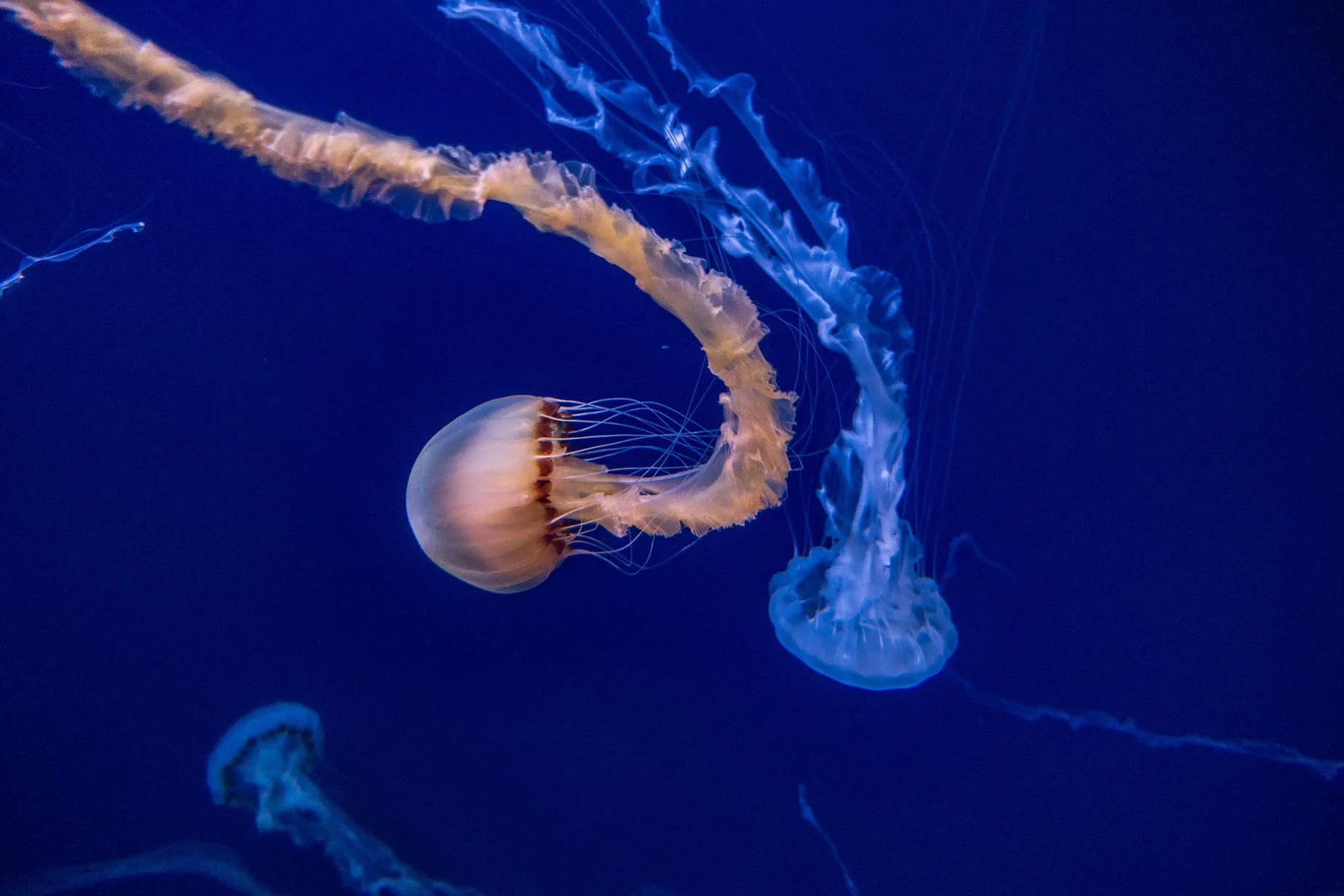
You must always be careful of venomous marine life when swimming, snorkeling, or diving. Know what to avoid, what to do in the event of a sting or an injury, and take precautions by only swimming in designated swimming areas and wearing marine shoes and other protective swimwear. The following are some of the venomous creatures that inhabit the waters of Okinawa. If you find yourself in need of emergency assistance, call 118 for the coast guard and 119 for an ambulance.
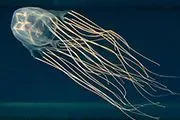
- Box jellyfish
Box jellyfish have a powerful venom and a strong sting that causes welts and is very painful. In Okinawa, they are typically sighted between May and October. They get their name from the cube-like shape of their bell which is semi-transparent. They can be very difficult to see and can even sometimes be found in shallow water just 50 centimeters deep.
First aid: Immediately leave the water, and pour vinegar liberally on any tentacles remaining attached to your skin. Do not rub the area. Carefully remove the vinegar treated tentacles, and chill the painful area with ice or cold water.
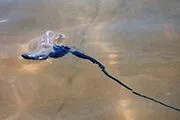
- Portuguese man-of-war
The Portuguese man-of-war floats on the surface of the water and has very long blue tentacles that extend far into the water. The float is a purple-blue color and can be up to around 30 centimeters long and 10 centimeters wide. They are usually found in the open ocean in tropical areas, but strong onshore winds can sometimes blow them into bays and up onto beaches.
First aid: Rinse with seawater, and remove or wash off any tentacles or cnidocytes stinging cells that remain attached to your skin. Chill the painful area with ice or cold water. NEVER treat with vinegar.
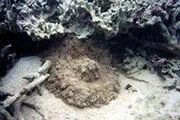
- Night anemone
The night anemone is an extremely venomous anemone with a diameter of between 10 and 20 centimeters. They are typically found in shallow lagoons. Most injuries occur when snorkeling or when walking on the reef or swimming at low tide.
First aid: Rinse with seawater to remove any cnidocytes stinging cells,and chill the painful area with ice or cold water. NEVER treat with vinegar.
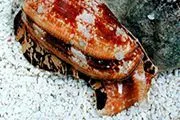
- Cone snails
Cone snails are a large group of small- to large-sized highly venomous sea snails that have a harpoon-like tooth which they use to inject prey with a neurotoxin. Bites cause almost no pain, but can result in paralysis, which in turn can cause drowning. In Okinawa, these snails typically have a reddish-brown color and a shell with a net-like pattern. They are usually around 10 centimeters long.
First aid: Squeeze out the venom, and get to the hospital immediately.
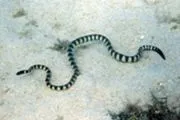
- Sea snakes
Sea snakes are related to cobras, and their venom contains a neurotoxin. While a bite causes little pain, the venom can cause difficulty breathing, hypotension, or paralysis in around 30 minutes.
First aid: Leave the water, squeeze out the venom, and get to the hospital immediately.
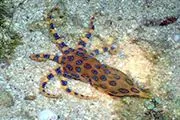
- Blue-ringed octopuses
Blue-ringed octopuses are small, only around 12 centimeters in diameter, and can be found in tide pools and coral reefs. They are pale in color with a blue ringed patterning that becomes bright when startled or stimulated. Their bite releases a venom which contains tetrodotoxin, the same potent neurotoxin found in puffer fish.
First aid: Do not attempt to suck the venom out. Squeeze out the venom, and transport to the hospital immediately.
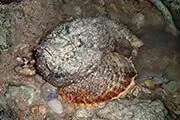
- Stonefish
Stonefish excel in camouflage and are difficult to tell apart from stones. They can be found in shallow water, and remain almost motionless. They have sharp venomous spines running along their backs that can pierce rubber-soled shoes if stepped on. Walking with small shuffled steps rather than large, raised steps may scare a nearby stone fish away and may help you avoid stepping directly on one.
First aid: Remove any spines piercing the skin and soak your foot in warm water around 40 to 45 degrees Celsius. You can also apply a plastic bag filled with warm water to the afflicted area. Do not use water that is too hot and avoid burning the wound.
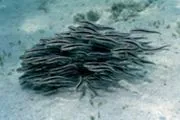
- Striped eel catfish
This catfish has venomous spines in its dorsal and pectoral fins. They inhabit shallow reefs and shallow sanded areas. They have a tendency for group behavior and juveniles form dense ball-shaped school Injuries typically occur by stepping on or touching the fish.
First aid: Remove any spines piercing the skin and soak the afflicted area in warm water around 40 to 45 degrees Celsius. You can also apply a plastic bag filled with warm water to the afflicted area. Do not use water that is too hot and avoid burning the wound.
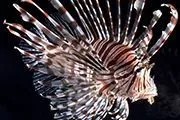
- Lionfish
Lionfish float suspended in water, move extremely slowly, and tend not to flee easily. They have venomous spines in their dorsal, ventral, and anal fins. When startled or threatened, they raise their dorsal fins.
First aid: Remove any spines piercing the skin and soak the afflicted area in warm water around 40 to 45 degrees Celsius. You can also apply a plastic bag filled with warm water to the afflicted area. Do not use water that is too hot and avoid burning the wound.
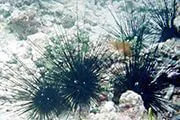
- Black longspine urchins
These tropical sea urchins have a small shell around five centimeters in diameter, but their spines are very long and have venomous tips. They are typically found in rocky areas and around reefs. Injuries occur by accidently stepping on them or touching their spines. Note that their spines are very brittle and can break off in the wound causing pain and swelling.
First aid: Remove any spines piercing the skin and soak the afflicted area in warm water around 40 to 45 degrees Celsius. You can also apply a plastic bag filled with warm water to the afflicted area. Do not use water that is too hot and avoid burning the wound.
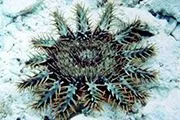
- Crown-of-thorns starfish
The crown-of-thorns starfish is one of the largest starfish in the world, with between 10 and 20 arms covered in venomous thorn-like spines. If these spines pierce the skin, they can cause intense pain, swelling, and anaphylactic shock in severe cases.
First aid: Remove any spines piercing the skin and soak the afflicted area in warm water around 40 to 45 degrees Celsius. You can also apply a plastic bag filled with warm water to the afflicted area. Do not use water that is too hot and avoid burning the wound.















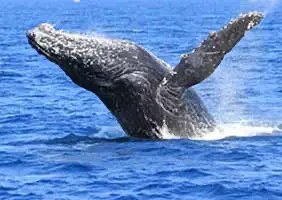



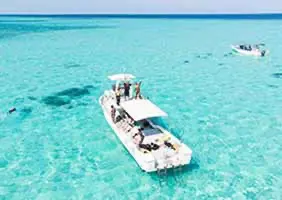
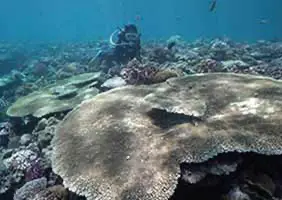








 Facebook
Facebook Twitter
Twitter Copy URL
Copy URL


